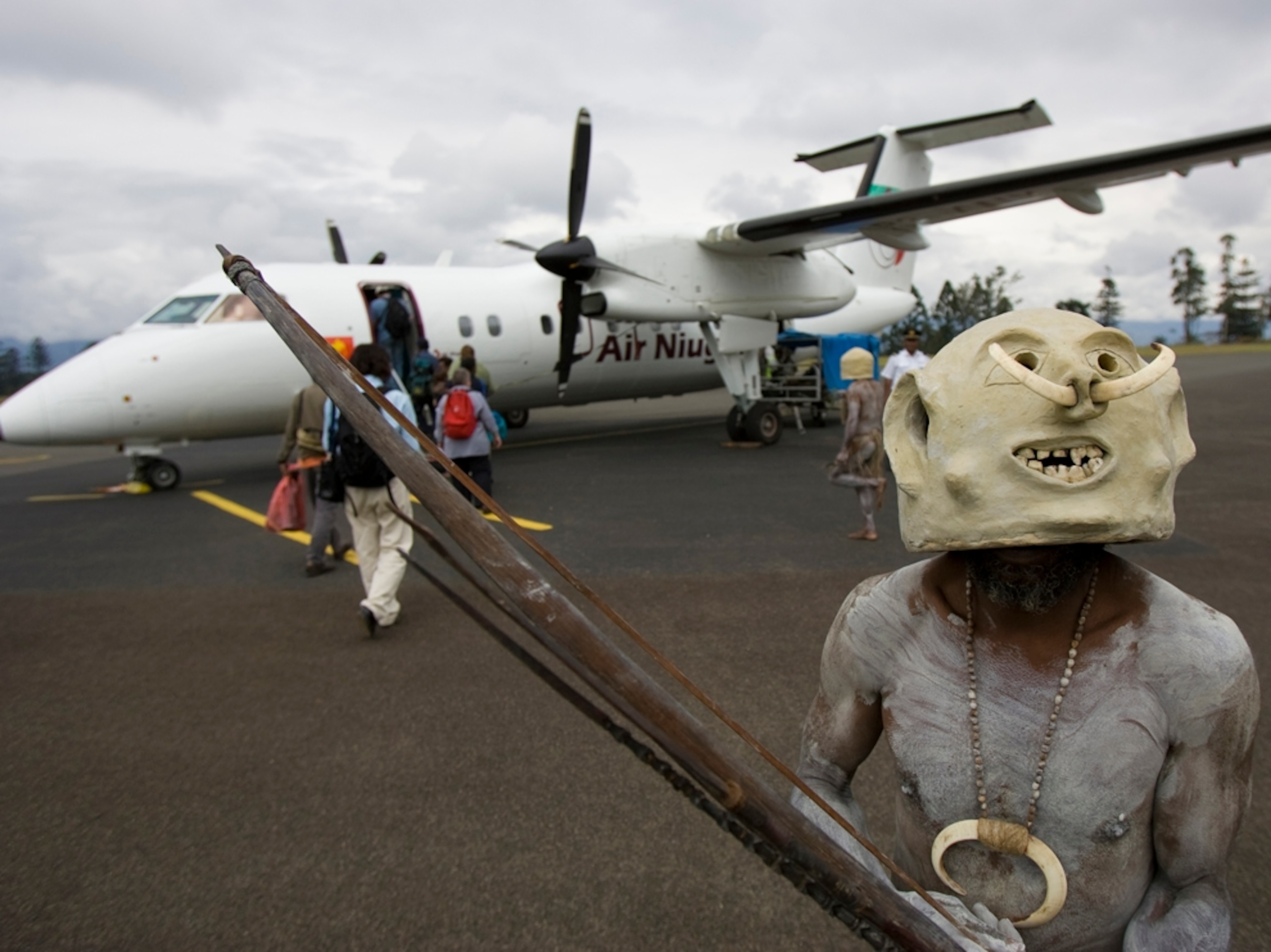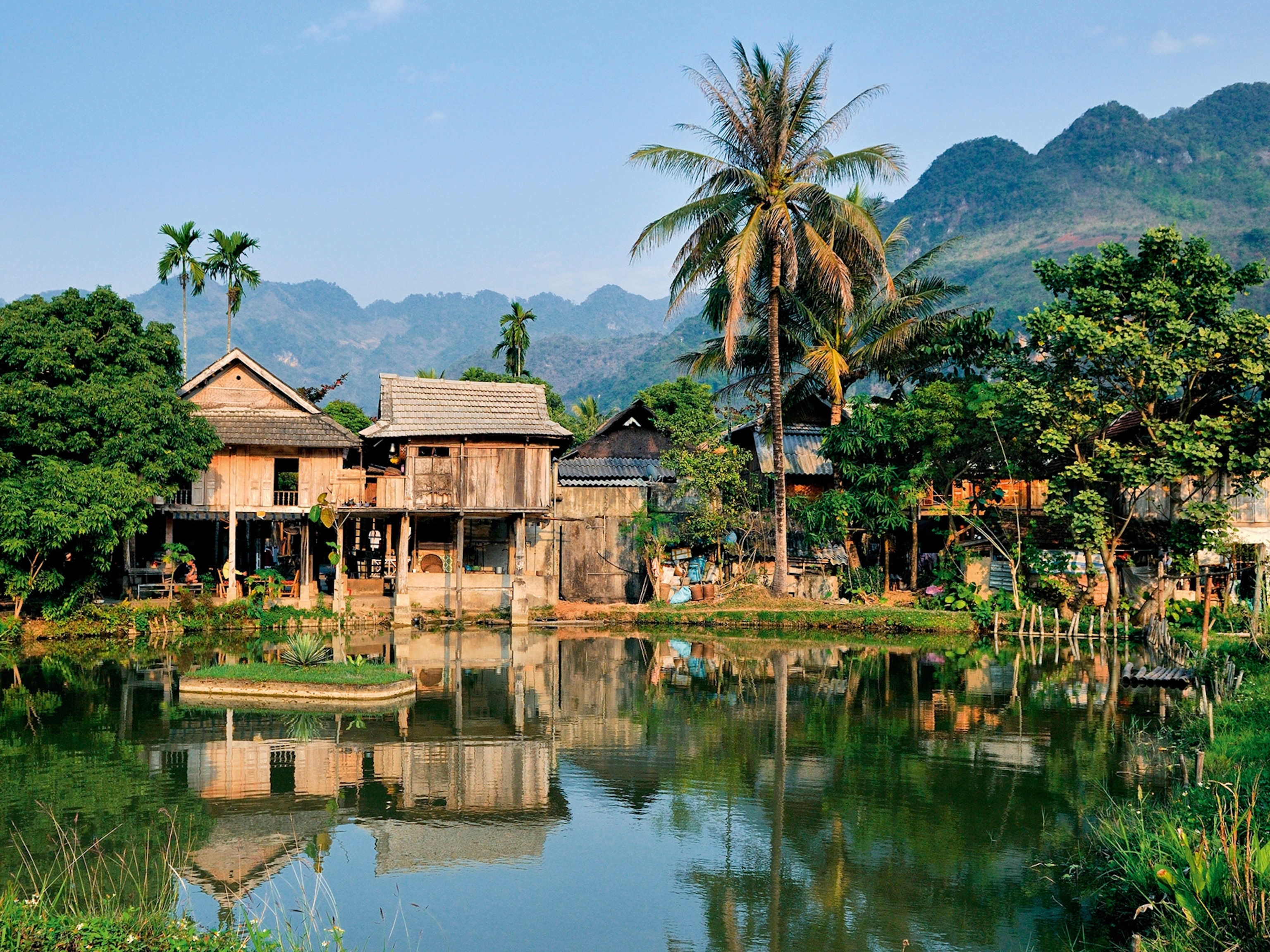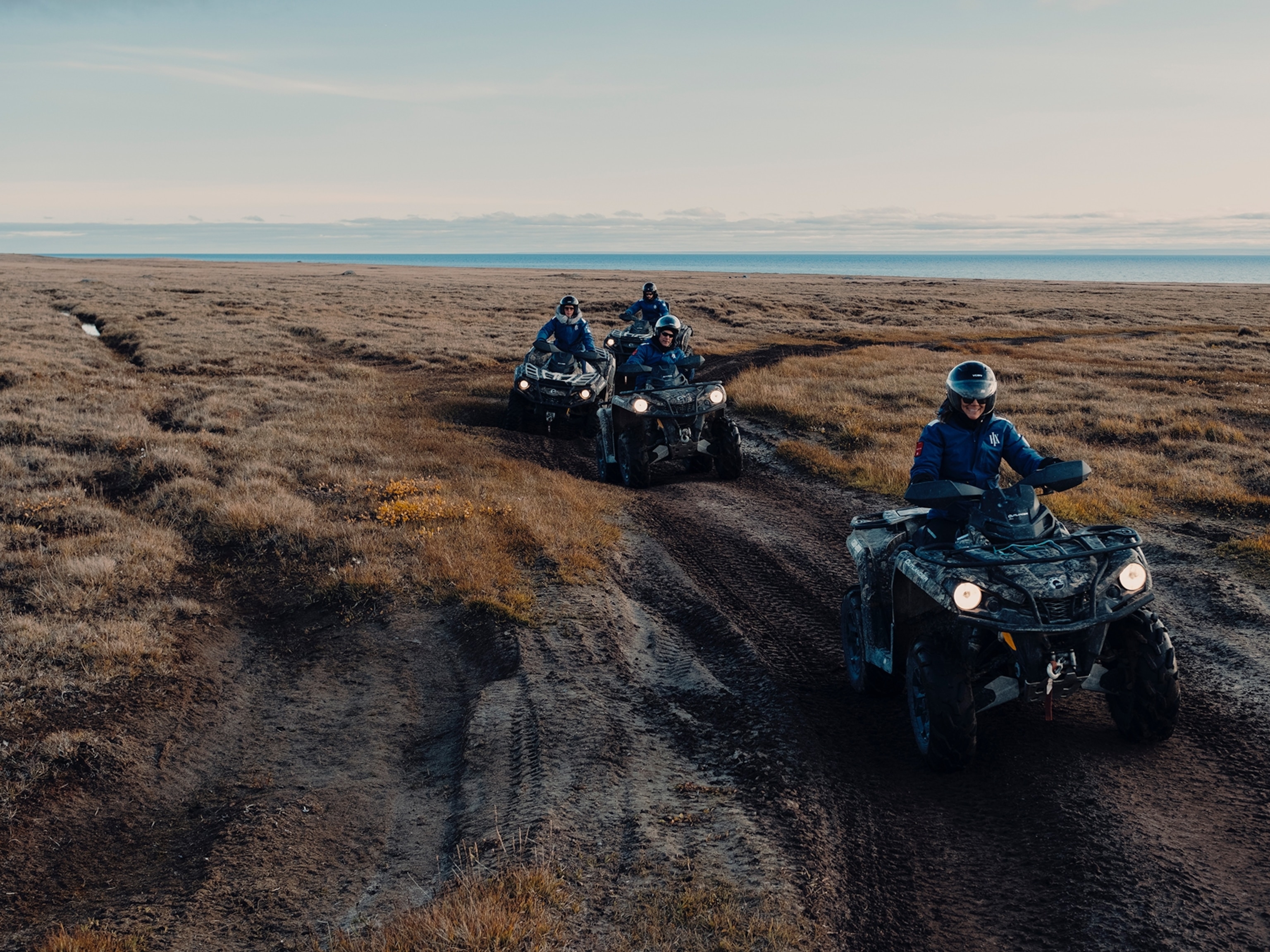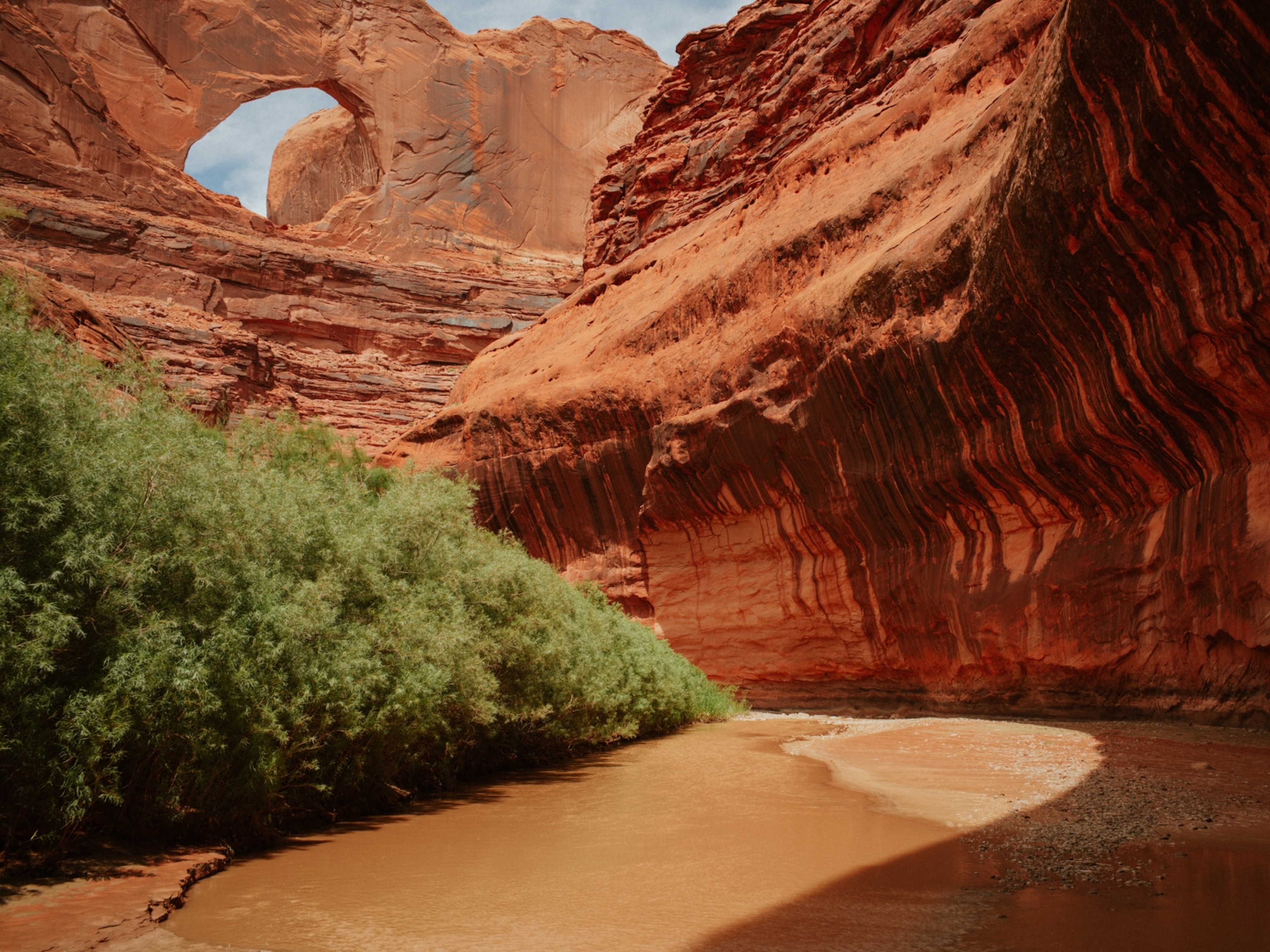
The Tribes Have Spoken
Tales From the Frontier
From the February/March 2013 issue of National Geographic Traveler
The noble savage. Primitive and uncorrupted by modern civilization, living a life in harmony with nature and each other. This image has been around for centuries, promulgated by novelists and explorers (including a few from National Geographic, truth be told), even as native peoples were conquered and colonized. Despite its inaccuracy, the romantic image endures, perhaps more so now on an always-plugged-in planet.
So the rise of tourism to tribal areas is no surprise. Click on almost any adventure travel site and stereotypical images pop up, from smiling long-necked Padaung women in Myanmar to the “lost world” Pemon Indians of Venezuela. One popular tour company even advertises, “We will search for tribes that have had limited or no contact with Westerners.” Although there are estimates that about a hundred “uncontacted” tribes still exist in the world, no one really knows for sure. What we do know is that encounters between outsiders and indigenous peoples have rarely gone well for the latter.
Last year, 30,000 tourists poured into Ethiopia’s Omo River Valley to see the Mursi and their seminomadic indigenous cousins before “modern development” overtakes them. The problem is that providing for adventure-seekers—with vehicles, restaurants, accommodations, and other tourism services—prompts the very changes they wish to avoid. Is it possible for the well-intentioned traveler to experience tribal culture without destroying it?
From the Kogi of Colombia to the Huli Wigmen of Papua New Guinea, many of the world’s last surviving tribal peoples—already under pressure from profit-hungry industries like timber, mining, and oil—also face tourism’s march across Earth. I’m a strong believer that tourism can be a powerful force for good, when planned well. If done badly, however, the consequences are sobering: Despite a government ban on tribal tourism in India’s Andaman Islands, during peak season last July dozens of vehicles filled with camera-wielding travelers snaked into a forest reserve set aside for the Jarawa, hunter-gatherers who began to emerge cautiously from the jungle in ones and twos during the late 1990s, and who now number fewer than 400. A video showed corrupt police making girls dance in front of cameras, and candy and biscuits being tossed out of tour bus windows to naked Jarawa children.
“For many tourists, visiting tribal communities is a way to experience life very different from their own. But tribes are not there for the photo-snapping entertainment of adventure travelers. What they need is to have their land and way of life protected, along with the right to say no to tourism,” says Stephen Corry, director for London-based Survival International, a tribal rights advocacy group.
And yet, many tribal groups are actually saying yes to tourism, seeing it as an opportunity for economic and other benefits for their people. Listen to Mamo Santos, a Kogi elder I met in Colombia’s Sierra Nevada. Standing serenely beside a grass-roofed house, he surveyed a parade of tourists navigating muddy trails in the jungle. They were bound for Ciudad Perdida—the no-longer-lost stone city cloaked in lianas that was built by his ancestors to escape Spanish conquistadores. “If our little brothers can help protect nature, which is sacred to us, and regain access to our spiritual sites on land that was taken, we welcome them,” he told me. “Little brothers,” I discovered, is how the Kogi refer to outsiders, including tourists.
“Indigenous societies and tourism rarely get along well, but when they do, it is the result of tribal leaders empowered to make decisions that are best for their own people,” says anthropologist Wade Davis, a National Geographic explorer-in-residence.
Given the potential for tourism to harm as well as help, indigenous people are reaching out to one another. The National Association of Tribal Historic Preservation Officers in the United States, which represents Native American groups, published a step-by-step Tribal Tourism Toolkit (step number three is instructive: “assess the hopes and horrors”). And last year, the newly formed World Indigenous Tourism Alliance collaborated with the Adventure Travel Trade Association to facilitate a dialogue between tour operators and indigenous peoples. One conclusion: Indigenous communities need to be treated as equals in any discussion of tourism, with the power to decide whether and how to balance their priorities with the desires of visitors.
- National Geographic Expeditions
There are positive examples to build on. The Inuit of Nunavik, Canada, have set up carefully monitored tours that allow visitors to experience authentic Inuit culture, including throat singing and foraging for wild foods, while providing jobs and promoting ethnic pride among the youth. In Kenya, where the Maasai have had decades of trial-and-error with tourism, the tribe owns Campi Ya Kanzi, an award-winning eco-lodge in a wilderness reserve on communal land. The Maasai get direct economic benefits, and visitors learn about an age-old way of life while helping to safeguard it. Done this way—by the indigenous people, for the indigenous people—tribal tourism is worth your support. As Mamo Santos said: On our terms, we welcome you.
UPDATE: Less than a month after Costas Christ's column appeared calling attention to the plight of the Jarawa tribe in the Andaman Islands from out of control tourism, along with international pressure for the India authorities to take immediate action to halt this exploitation of the Jarawa, the Supreme Court of India issued a ban on January 17 prohibiting all tourists from entering the Jarawa reserve and ordering two tourist attractions inside the reserve—a limestone cave and "mud volcano"—to close.







